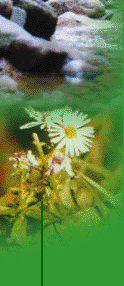Observing
Obviously the easiest way to observe squirrels is by stepping out your door(if you live in a rural or suburban area, sorry city folk) and looking around. You can take this a step further by investing in a good pair of binoculars. They will help you see the squirrels more easily without getting close enough to scare them.
Try to find a large cemetery, botanical garden, or nature reserve in your area. These are good places to observe squirrels and other wildlife. You can also purchase a guide book that will makae identification easier.
I have built a squirrel blind in my backyard with which I have observed squirrels. What I did was take two large black trash bags, cut one side of them in half, duct tape the two trash bags together where you cut them, spray paint the entire apparatus in army camo, poke a few holes in it, and lastly find a big stick to hold it up with. You sit under as if you were in a tent, with the stick in the middle. Put yourself in a corner near some trees and wait. You might want to leave some nuts or something a few yards in front of the blind to attract the squirrels.
Trapping
When a squirrel takes up residence in your attic or crawl space, the only practical way to remove them is by trapping.
First check with your local government agency. Your city, state, or county might require you to obtain a permit. Your best bet is to call a professional trapper in most cases however.
If you are allowed to trap, your next step is to find a suitable trap. Most large sporting goods stores will have a selection of live animal traps to choose from. Live traps sell for about $30, for a small 5"x5"x18" Havahart trap and can go up to $90 for larger sizes. Tomahawk Live trap also carries a complete line of traps and supplies.
Traps should come with instructions on how to bait and set them, be sure you understand and follow the directions. Crunchy peanut butter is considered the best bait for a squirrel. Placing a spoonful on the trip lever usually does the trick.
Leave the trap out open, unset, and unbaited for a few days so the squirrel can except it as part of the surroundings. Be sure you are wearing heavy work gloves while handling the trap. Be prepared to hear a lot of screaming from the squirrel.
You must relocate the squirrel at least three miles from your home, even further if you are in aheavily wooded area. An ideal location would be near a natural boundary, such as a lake or river. If you're moving the squirrel within an urban area, try to place it across several highways and busy streets. You should give some thought to where you are going to relocate the squirrel before capture. A place where it can find water, food, and shelter would be in your best interest. Don't give it a reason to come back.
Feeding
You can feed squirrels much in the same way you would birds. There are a variety of feeders and houses you can buy or build especially for squirrels. NEVER HAND FEED A WILD SQUIRREL! Squirrels enjoy nuts, fruit, peanut butter, and berries. You can find more on this at the websites listed in the Links page.




